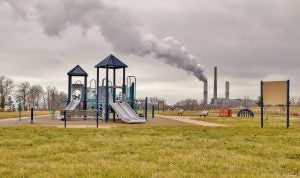
Re-visioning TSCA: Better protect those at greater risk
Richard Denison, Ph.D., is a Lead Senior Scientist.
Part 3 of a 4-part series – see Part 1, Part 2, and Part 4 here
This series of blog posts is looking ahead toward opportunities to advance a more robust and holistic vision for implementing the Toxic Substances Control Act (TSCA) as reformed in 2016.
In the preceding installment in this series, we discussed TSCA’s mandate for EPA to conduct comprehensive chemical evaluations. The Trump EPA’s failure to do so especially detrimental to those groups at greater risk because they are more likely to face the precise exposures and susceptibilities that the Trump EPA excluded. In this installment of our series, we will address how TSCA can and must be used to better protect those at greater risk from chemical exposures.
The Biden administration’s stated commitment to environmental justice and greater health equity provides an opening to harness TSCA as one means of making progress.
Extensive scientific research demonstrates that some groups are at greater risk from chemicals than the general population. Such groups include those who are more highly exposed because of where they live or work, as well as groups who are more susceptible to the effects of chemical exposures, such as those with pre-existing conditions. Differential exposure and susceptibility to toxic chemicals contribute to and amplify the major health inequities we see across the U.S. population.
Potentially exposed or susceptible subpopulations
TSCA expressly incorporates this body of scientific knowledge – and it is the only federal environmental statute to do so in such an expansive manner.
Throughout TSCA is the requirement for EPA to consider risks to “potentially exposed or susceptible subpopulations,” which TSCA defines as “a group of individuals within the general population identified by the Administrator who, due to either greater susceptibility or greater exposure, may be at greater risk than the general population of adverse health effects from exposure to a chemical substance or mixture, such as infants, children, pregnant women, workers, or the elderly.”
This definition is applied at each step in TSCA’s process: in prioritizing chemicals for risk evaluation; in evaluating risks to both new and existing chemicals; and in regulating identified risks. Hence, EPA must specifically identify, evaluate, and mitigate risks to groups of people who may be either disproportionately exposed to a chemical (for example, because of where they work or live), or disproportionately susceptible to the effects of such exposure (for example, because of other health conditions, life stage, or co-exposures).
Residents of fence-line communities – those located closest to industrial manufacturing or disposal facilities – face exposure from multiple sources or at higher levels (or both) than the general population. Such communities, due to discriminatory practices in facility siting, planning and in housing policies (see, for example, here and here), are disproportionately communities of color and low wealth. Workers employed in lower-paying, higher-risk occupations may experience chemical exposures that are higher, more frequent, or of longer duration. Additionally, people with less access to health care or who are in poorer health can be more susceptible to a chemical exposure.
TSCA’s emphasis on “potentially exposed or susceptible subpopulations” should clearly extend to all of these at-higher-risk populations. Hence, it is critical to ensure that in implementing TSCA EPA takes a careful, thorough approach to meeting TSCA’s mandate to address chemical risks to subpopulations with greater vulnerabilities. In this way, the law can offer a tangible and direct way to help address health inequities and better protect those at greater risk.
The Biden administration’s stated commitment to environmental justice and greater health equity provides an opening to harness TSCA as one means of making progress. When prioritizing chemicals, EPA can and should select those that disproportionately impact and drive the health inequities faced by groups facing the greatest vulnerabilities. When evaluating a chemical, EPA needs to fully assess its risks to fence-line communities, workers and others facing disproportionate risks. And when mitigating risks, EPA must prioritize reducing disproportionate exposures and health disparities. And critically important, the agency needs to engage the affected communities and incorporate their input and knowledge at each step in this process.
Up next in this series: How TSCA can be used to account for the cumulative impacts of chemical exposures.












